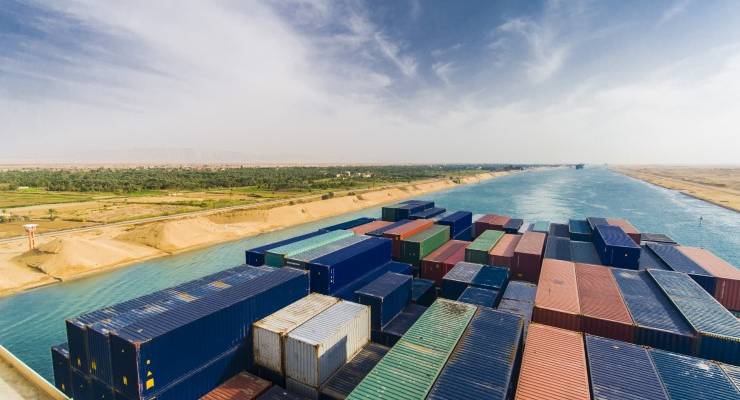

In the 20th century, trade traversed the Atlantic. In the 21st century, with the rise of Asia, huge volumes of trade moved between Asia and Europe and between Asia and the east coast of North America.
Egypt is uniquely well positioned to take advantage of that being — since the Suez crisis of the 1950s — the owner of the canal. At up to US$700,000 (A$923,000) a ship per transit the canal is quite the asset.
Going round Africa is an option, but not a good one. Passing the Cape of Good Hope adds 9000km and 10 days to a journey between Africa and Europe.
As seaborne trade rises, so does the value of the canal — and so does the global economy’s dependency on it. 2020 has given us a glimpse of a world of shortages, and we know how disruptive they can be.
The recent seven-day blocking of the canal by the tanker Ever Given held up an estimated $US9.6bn worth of goods a day — and is expected to disrupt global supply chains for several weeks despite this week’s successful unblocking.
The Productivity Commission released an interim report on supply chain vulnerabilities last week. That’s timely, but it doesn’t actually mention the risks of depending on narrow shipping channels, be they the Straits of Malacca, which are plagued by pirates, or the Suez Canal, which is plagued, apparently by its own narrowness, as well as major geo-strategic risks.
Maybe, Productivity Commission wonks, it’s worth including a new chapter in the final edition of the report.








Crikey is committed to hosting lively discussions. Help us keep the conversation useful, interesting and welcoming. We aim to publish comments quickly in the interest of promoting robust conversation, but we’re a small team and we deploy filters to protect against legal risk. Occasionally your comment may be held up while we review, but we’re working as fast as we can to keep the conversation rolling.
The Crikey comment section is members-only content. Please subscribe to leave a comment.
The Crikey comment section is members-only content. Please login to leave a comment.